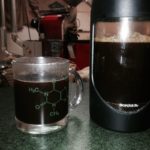10 Reasons Coffee is Cause for Celebration
Piece contributed by Natasha Bourlin Passport and Plume
Coffee, while delicious, isn’t just for your cup
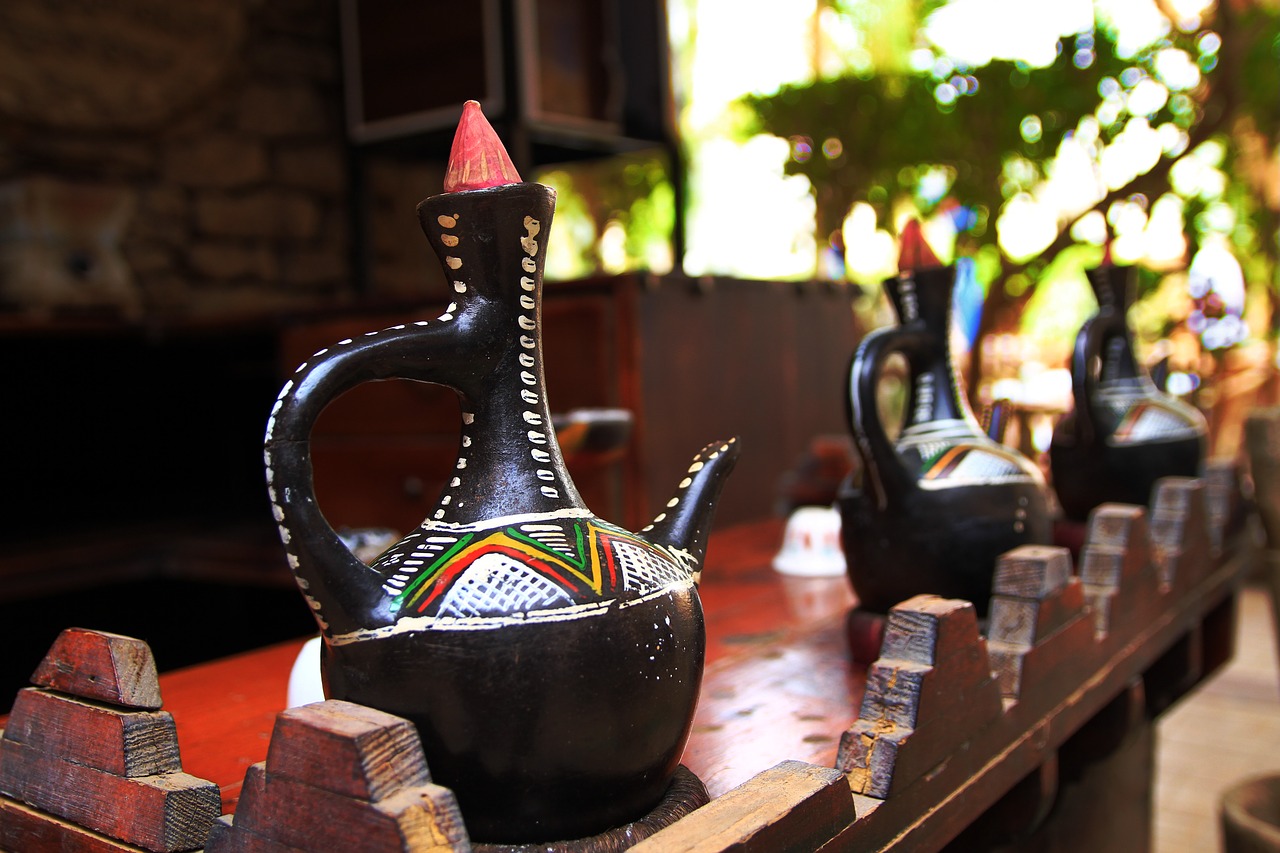 An Ethiopian legend is told in which Kaldi, a goat herder from the plateaus of Ethiopia, originally discovered the benefits of coffee beans after witnessing his goats eating them and becoming so energetic, they didn’t sleep.
An Ethiopian legend is told in which Kaldi, a goat herder from the plateaus of Ethiopia, originally discovered the benefits of coffee beans after witnessing his goats eating them and becoming so energetic, they didn’t sleep.
Whether or not this is truly the first revelation of coffee’s many benefits, humans have enjoyed it for centuries. And we continue to, daily.
Why do we love coffee so?
Well, aside from sipping on this deliciously caffeinated concoction prepared ritualistically by millions each morning, it’s far more than just a delectable beverage. It has health benefits, adds to the flavor of foods, is usable in a multitude of ways around the house, and also can be part of your daily beautification.
Here are a few reasons we’re enamored by coffee in this season of gratitude and love.
1) The flavor.
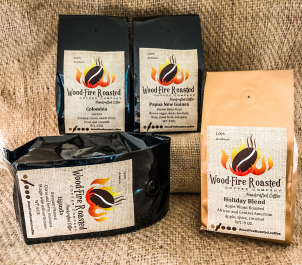 With a bevy of diverse varieties and roasts, there’s a coffee for everyone, you just need to explore. Try a coffee sampler to find your favorite and read up on proper preparation methods so you elicit the finest flavors from your beans.
With a bevy of diverse varieties and roasts, there’s a coffee for everyone, you just need to explore. Try a coffee sampler to find your favorite and read up on proper preparation methods so you elicit the finest flavors from your beans.
Tasting coffee can be much like tasting wine, identifying flavor profiles and subtle aromatic notes plus finding foods that pair well with them. Have fun with this, perhaps host a – virtual or real-life – tasting party, taking notes and sharing perceptions of the different varietals and roasts.
2) It has numerous health benefits.
Experts at Healthline have rounded up a whopping 13 ways coffee can keep you healthy, ranging from helping to burn fat and lessening your risk for Type 2 diabetes, to lowering risks of strokes and certain types of cancer.
Another benefit, especially while homebound?
As cited by Healthline, “In a Harvard study published in 2011, women who drank 4 or more cups of coffee per day had a 20% lower risk of becoming depressed (38Trusted Source).”
3) Your plants love it too.
Did you know you could use any leftover coffee to water your plants? Dilute it slightly and pour it into plants that need an acidity kick or use the leftover coffee grounds for compost to replenish the soil. Make sure you don’t over acidify them, however. Just a bit now and then should do the trick.
4) It makes you even more beautiful.
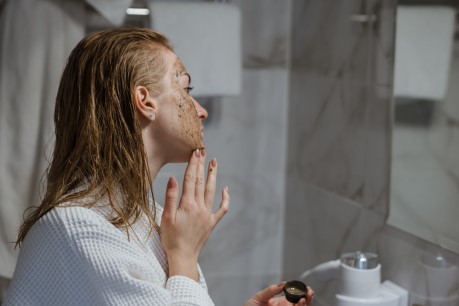 Use coffee grounds or freshly ground coffee beans to make a face or body scrub. The caffeine in coffee helps boost blood flow and reduce the appearance of cellulite. It’s also fantastic at exfoliating dead skin cells, leaving your skin soft and smooth after using your homemade scrub.
Use coffee grounds or freshly ground coffee beans to make a face or body scrub. The caffeine in coffee helps boost blood flow and reduce the appearance of cellulite. It’s also fantastic at exfoliating dead skin cells, leaving your skin soft and smooth after using your homemade scrub.
Here’s a simple recipe to create your own.
5) It contains essential nutrients.
Riboflavin (AKA vitamin B2), manganese and potassium, pantothenic acid (aka vitamin B5), niacin…coffee contains vitamins and minerals that may surprise you. So, you’re not just getting that reassuring sense that you can make it through the day when you pour yourself a cup, your body is thanking you too.
6) You can cook with it.
Have you ever made a coffee rub for your steak, tri-tip, or pork? You absolutely should.
Ground coffee is acidic, acting as a flavor enhancer and tenderizer for meats. Rubbing the cuts of meat with coffee also creates a flavorful crust that keeps the moisture in, maintaining its mouthwatering juiciness. Try this Bon Appétit recipe for a coffee-rubbed steak. A homemade coffee-balsamic glaze drizzled on the steak is the perfect topper…
Another option is to bake with coffee. Replacing water or milk in a recipe with coffee adds a subtle richness to any baked good (think Belgian waffles or cupcakes). Other recipes require ground coffee, like these delicious vegan brownies.
You can also make fantastic overnight oats using brewed coffee.
7) It makes your hair soft and scalps healthy.
Save your money on baldness or thinning hair treatments and scrub your scalp with coffee grounds instead. One study found that the caffeine in coffee is helpful in slowing hair loss and promoting growth.
Acids in coffee also help strip your hair of product build-up, with the oils leaving it shiny and soft. Here are some ways your hair is helped by coffee.
8) Coffee makes the world smell better.
The nitrogen in coffee combined with carbon helps to neutralize foul odors. If your home or car needs some natural deodorizing, put coffee grounds in something breathable, perhaps a sock, then tie it off for an instant air freshener.
Also, a bowl of grounds in the fridge works much like baking soda to eliminate odors from smelly or rotten foods.
It’s your new kitchen sink helper. Do your dishes have some stuck-on stuff you can’t get off? Try coffee grounds when scrubbing your pots and pans! Another handy use is washing your hands with coffee grounds after working with onions or garlic. It’ll help you not have to remember cooking dinner for the rest of the night.
9) Get crafty with coffee.
Feeling creative? Grab your coffee grounds. 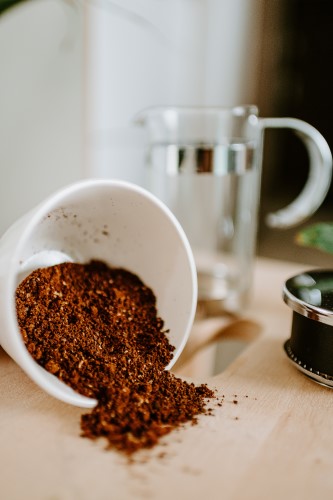
The same coffee that dribbles on your clean shirt and reminds you of its goodness all day can also be handy in dying fabrics. Steep fabric in coffee (a bucket works great), add a bit of vinegar to set the color and you have hand-dyed cloth.
Another crafty use of coffee grounds is antiquing paper. Create aged-looking invitations, cool letters (remember those?), or a fun canvas for art projects.
10) Repel ants.
Coffee is beloved by humans, but no so much by ants. If you have an ant issue, sprinkle used coffee grounds around problem areas like your pet bowls or sink to deter the pesky creatures. They’re not a fan of the strong aroma that draws us in daily.
Keep ordering Wood-Fire Roasted Coffee and use every last bit after you relish the flavor. It’s so much more than just a morning eye-opener.
How Coffee is Like Music
By Natasha Bourlin Passport and Plume
Sometimes, when taking that first sip of freshly ground, freshly brewed Wood-Fire Roasted Coffee, we can almost hear music. It’s like an exquisite choir, a catchy beat, a perfectly orchestrated symphony in your cup. 
Both music and coffee are readily available and can be quite uplifting. An incredible cup of coffee can also set the mood for our day, much like music does.
We often describe coffee’s flavor profiles with words such as tones and notes. And, much like musicians, a dedicated coffee roaster’s soul is poured into his craft. Roaster Tim Curry does this daily, quietly evoking his own form of music from the beans.
So, we’re going to play with this a bit today. Let’s walk through how coffee can parallel music…
Bluesy Beans
Some bean varieties can resonate like soulful blues. This form of music influenced many other genres over the decades. Its depth stirs the soul, and sounds emanating from blues musicians are simple, straightforward, and full-bodied.
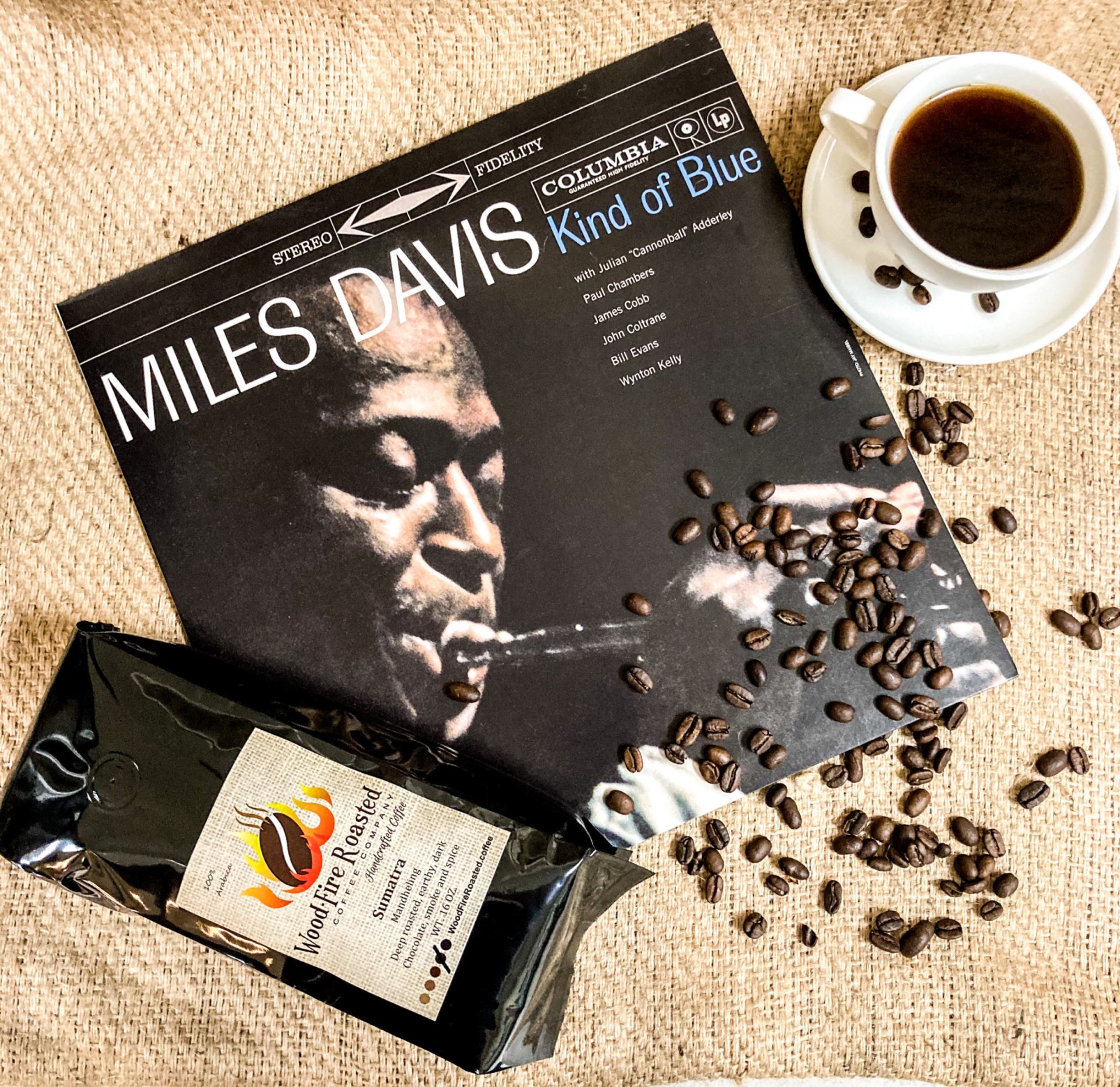
Think of BB King strumming his guitar Lucille, each note played with intense passion, evoking feelings from deep inside listeners.
The same can be said of coffees from South and Central America, Indonesia, and the South Pacific. For instance, great Guatemalan coffee has rich, sweet, creamy notes. Flavors in the widely sought-after Panama Geisha can be intense, strong, and soul-stirring. Coffees grown in these regions have influenced others for centuries.
Symphony in a Cup
A superb coffee is like a classical symphony in your cup when properly brewed. A finely tuned, flavorful orchestra working together to create a palatable masterpiece.
A good coffee roaster acts as the composer. When roasting, they bring out the bean’s best qualities, tune them together and create a magnificent, unified melody.
Classical music began as an audible expression of life, a method of capturing Earth’s tune and expressing complicated human emotions. Beethoven claimed much of his inspiration came to him on his daily outdoor walks.
In a symphony, no single instrument stands out over any other, in general. They all work together in harmony. Brahms, Mozart, Tchaikovsky, and many others created orchestral arrangements that are intensely moving, often inspirational.
Jazzy Coffee
Jazz and coffee are closely knit. In fact, during the beatnik generation, notables like Jack Kerouac would sit in coffee shops, sipping on their steaming brews while listening to Dizzy Gillespie and Thelonious Monk.
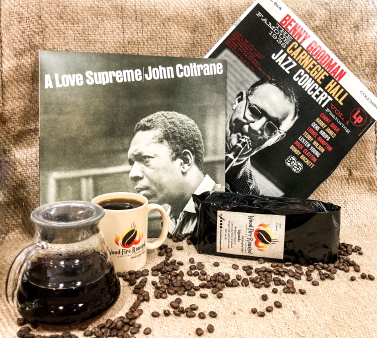
A lively form of music, jazz can inspire you to dance. Known for its horns, percussion, bright tones, and high notes, jazz is busy, with lots of layers within it. The multi-faceted strata of jazz instrumentation and rhythms can prove thought-provoking. They all play off of each other, each instrument complementing the next in a dynamic way.
Delicious coffee can also get your toes tapping. Try varieties from northeast Africa, like Kenya or Uganda. Meanwhile, Rwandan coffees can evoke the ivory-tickling sounds of Gershwin, with their brightness, crisp citrus, gentle caramel, and refined sweetness.
Coffee, as well, is a beautiful expression of the land. In a perfectly roasted coffee, all of the flavor profiles create an arrangement your taste buds will be utterly entranced by. Take the classic Ethiopia Yirgacheffe, for example. Its earthy flavor profiles blend together seamlessly. Think orchestra versus guitar solo. Same with Burundi beans.
Next time you’re about to enjoy your daily coffee ritual, match your music to your beans, and see how the experience is elevated. From the moment the brew touches your lips and the tunes hit your ears, coffee and music can be a truly rousing, delicious combination.
Camping, Coffee, and Closeness
Contributed Piece by Natasha Bourlin of Passport and Plume
It’s a clear, crisp morning as you move ever so gingerly from your tent out into the world. The scent of pine, wildflowers, and just a hint of last night’s campfire lingers in the air. Stories shared and lessons together ruminate in your mind. 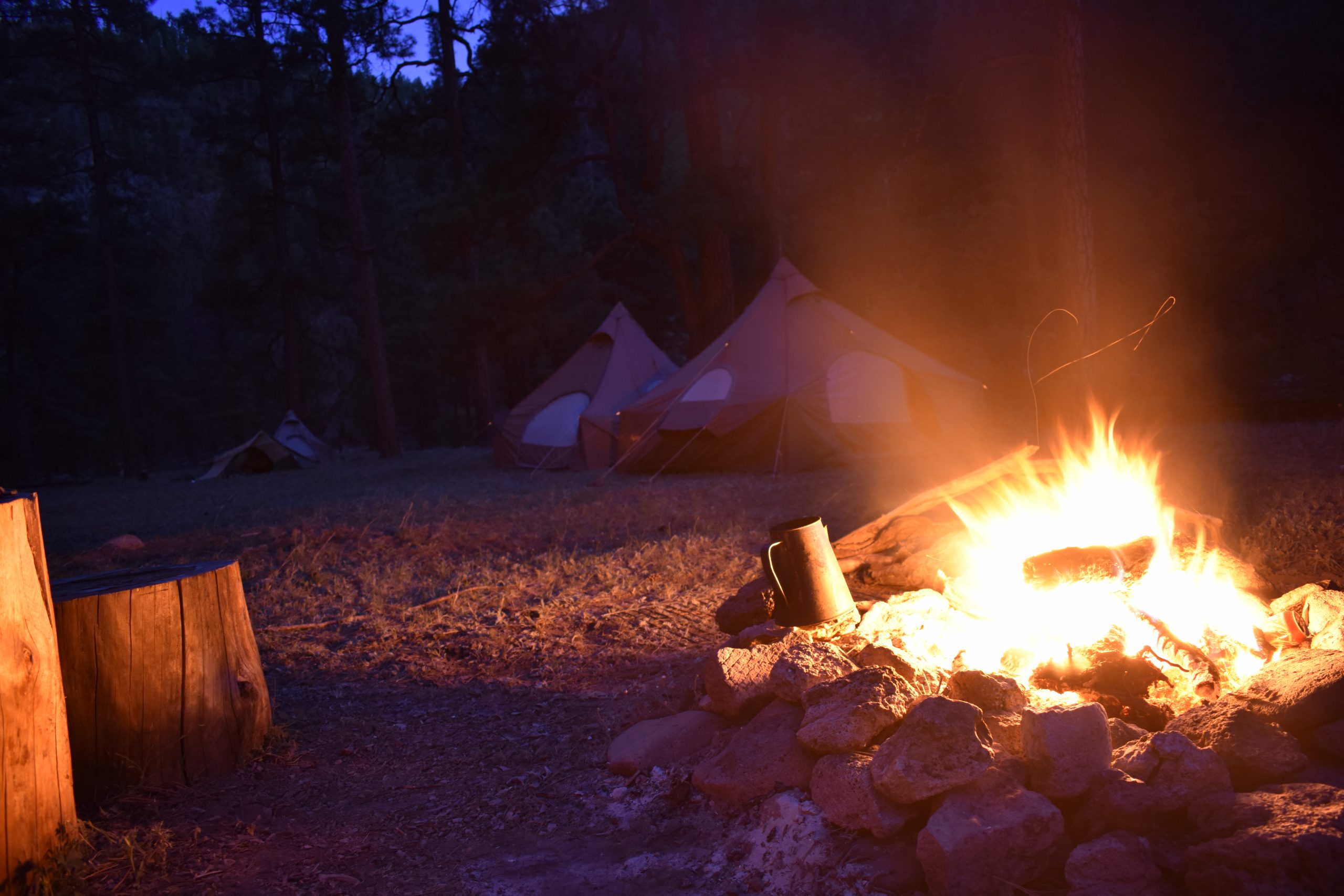
And, if you are anything like me, the first thought is, “COFFEE.”
Camping is one of the best getaways you can take in the midst of the COVID crisis. Relishing the outdoors, jumping in nearby streams or lakes, going on nature hikes plus the togetherness inspired by Mother Nature that never seems achievable while home.
And the meals…how does everything prepared while camping taste better than any five-star eatery you can dine in? OK, well, mostly…
Coffee, however, maybe the most delicious camping concoction there is. Techniques used to prepare it while out in the wild create a soulful, hearty, delicious beverage that readies you for another day of play.
How to Make Mouthwatering Coffee Camping
Tools you need:
1. Hand Grinder (unless you have electricity available)
Look at the Hario conical burr grinder or Zassenhaus hand grinders. Both are great options. Shop around and find the one that suits your needs best.
2. Scale (optional)
Sometimes forgoing precision for the sake of expediency is necessary. Have a battery-operated scale for optimal results.
3. Gooseneck Kettle
You will need something that will work over your campfire or camp stove. Hario has a nice option.
4. Wood-Fire Roasted Coffee Beans
Of course.
Brew System Options:
• French Press
o This is always a fantastic way to brew coffee when camping. Get an insulated French Press with Bru-Stop technology from Planetary Design. The problem with the French Press is cleanup.
o
• Single-Cup Pour-Over Brewers
o This method requires a bit more attention during the brewing process but provides a wonderful cup of coffee.
o Perfect if you are the only coffee drinker in the group. Some excellent options are the Hario V-60, Kalitta Wave or Melitta.
o Don’t forget your filters if this is your chosen brew system.
Preparing the Coffee 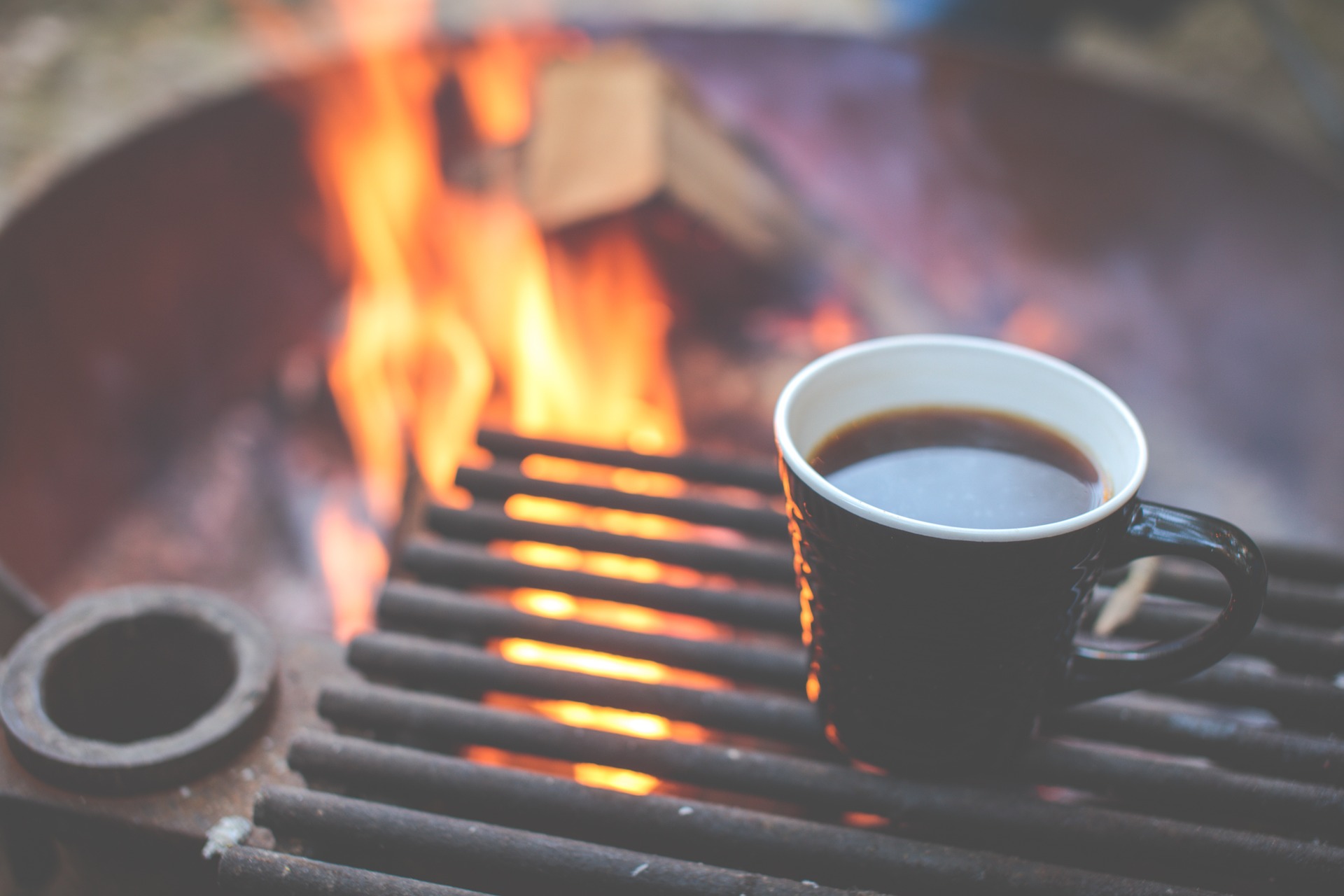
The campfire coffee ritual begins by selecting from the diverse selection of wonderful, whole-bean coffee from our roaster. Perhaps you choose our bright and lively Ethiopia Yrgacheffe or our classic Cowboy Roast.
Then, get the water going over the camp stove or fire (Remember: 195-205° F to brew).
As the water heats, carefully measure your beans and hand grind them. For me, this is very enjoyable; the aroma of the freshly ground coffee, the feel as the grinder works its magic and opens up the beans preparing them for the brew add to the overall sensory experience.
Then, to brew, I prefer the pour-over methods as they are very hands-on throughout the process. The smells, brewing coffee, and the crisp, clean air. Then, to drink, face the rising sun taking the first sip. The ritual, the enjoyment, the peace, the joy.
Now, pack up your bags, sleeping included, tent or RV and get ready for the multisensory adventure of a lifetime.
Taste-Makers Wood-Fire Roasted Coffee Company
Contributed piece by Natasha Bourlin of Passport & Plume
How do you taste your coffee, and what temperature is optimum?
So, you’ve taken all of the steps to prepare your perfect cup of coffee…now it comes down to how you taste it. Yes, how you taste your coffee is just as important as any other step in the process. And in tasting, the temperature can be a major factor.
Through experimentation and researching the taste sensory operations, experts (you know, scientists and, well, coffee connoisseurs with decades of experience like Wood-Fire Roasted Coffee Co. Owner/Roaster Tim Curry) have determined that the green zone is the ideal temperature zone for drinking your favorite brew.
Why?
We’ll answer that by exploring how we taste and how the brain processes flavor.
Remember the tongue and taste bud lessons we learned and the diagrams we saw while in school?
It turns out that the tongue diagram was just a way of starting a conversation that was never brought to any real conclusion.
“Digging deep into my memory of what I was taught about taste, I remember the picture of the tongue with the four tastes depicted as happening in specific parts of the tongue, such as, sweet at the tip and bitter at the back,” Curry elaborates. “Then there is umami, what exactly is that? I never heard of it until one of my coffees was described with the term in an article. New stuff to learn, yay!”
The aforementioned experts learned that we taste everything throughout our oral cavity, and smell may be one of the most important aspects of taste.
But why do we find some flavors and aromas pleasant and others off-putting?
The answer is quite primal.
A study published by the National Institutes of Health states, “People and other mammals rely on taste to guide food choices. For example, we’re attracted to sweet foods, which are usually rich in energy. A bitter taste, on the other hand, might be a warning sign of potentially harmful chemicals.”
So, how does temperature come into play with how we perceive tastes?
You can do a deep dive into the science of this thanks to articles like this one from the National Center for Biotechnology Information, or from our fellow coffee lovers at Homegrounds.co, but Mr. Curry did his own.
He ran his experiment by first dropping a thermometer probe into his cup, then left it there as he drank his coffee. A simple, direct, and informative approach.
Here is what he found, the total test sample:
The coffee finished brewing at about 160° F.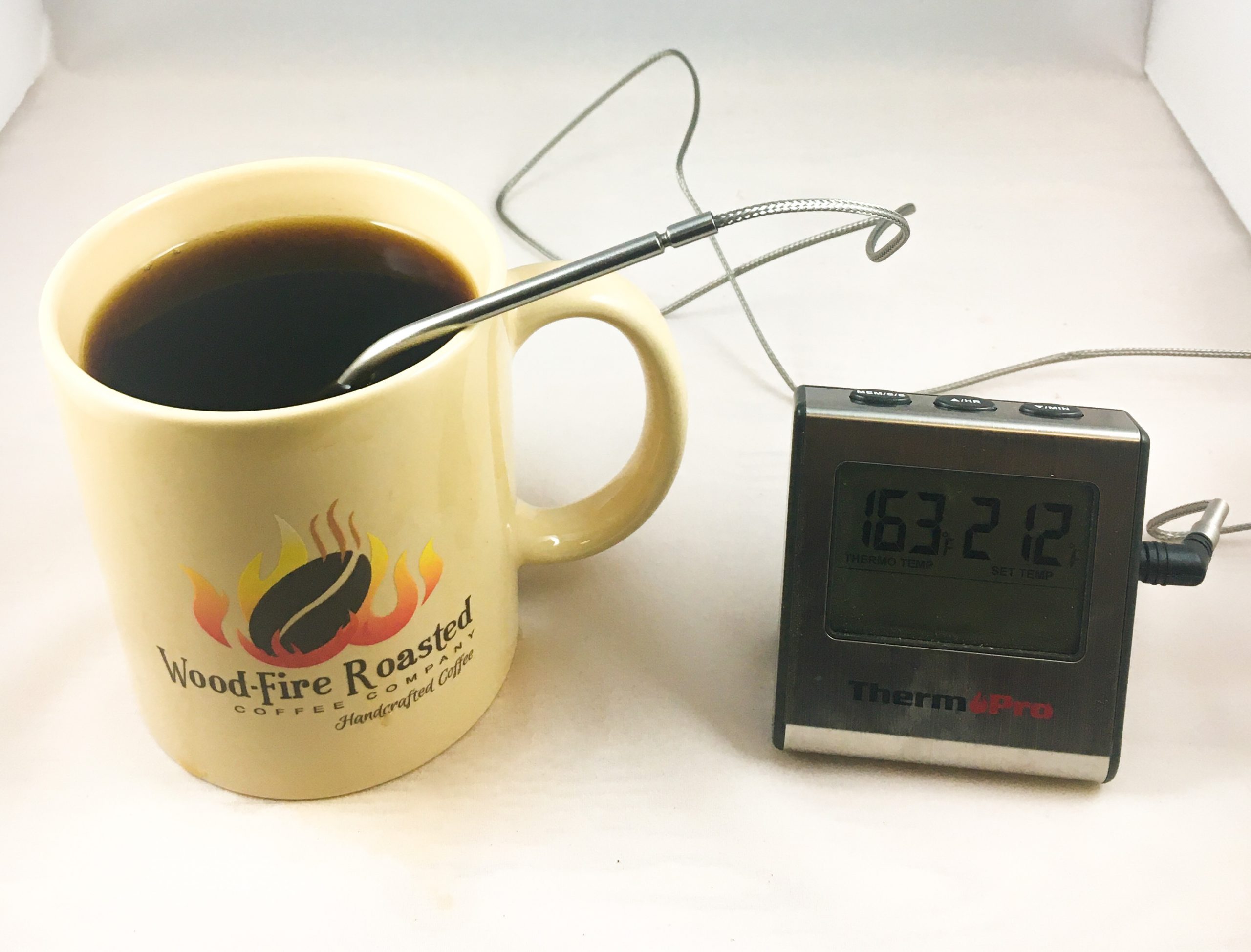
Drinking the coffee at this temperature resulted in more pronounced bitter tones, less sweetness, and less depth of flavor (as compared to the flavors he would experience as the cup cooled).
As the coffee cooled below 150° F,. sweetness started to become more detectable. Acidity also became more pronounced.
The true flavor explosion began as the temperature dropped below 140° F. 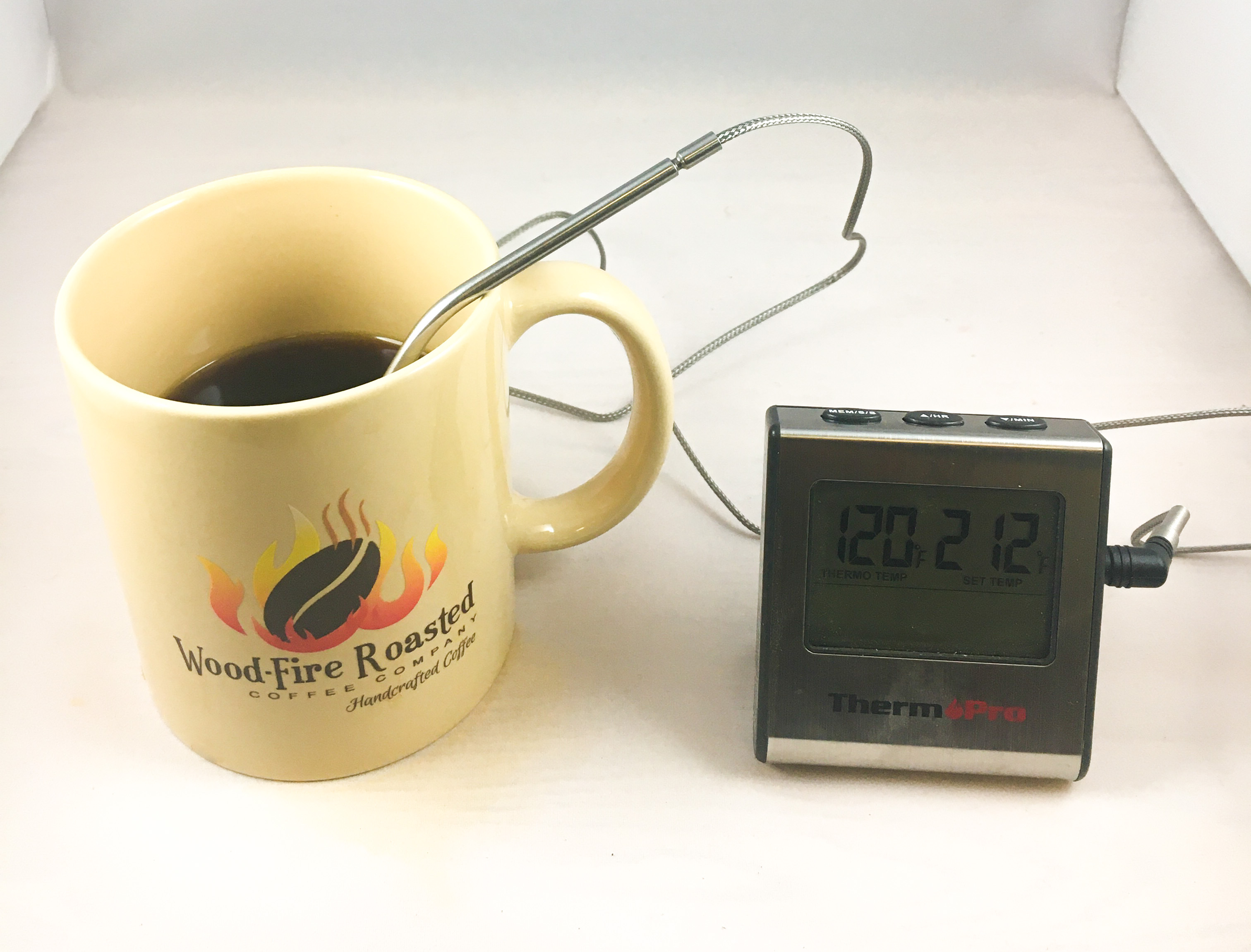
Sweetness and regional flavor characteristics were at their optimum. Any crisp acid tones were well balanced with the other cup components and the coffee was, in Curry’s opinion, at its best expression.
This held true until the temperature dropped below about 118° F.
At this point, the acidity started to dominate the profile and move toward a less-than-perfectly balanced cup.
He then performed his temperature test on most of the coffees WFRC offers and found that the general guidelines held true. Lower acid coffee still had an increase in perceived acidity as the cup cooled, and coffees that are roasted darker, which tend to be more bitter, mellowed as the sweetness became more perceptible and the coffee moved from 160° down to 140°.
Owner/ Roaster Curry has always referred to the “life of the cup”, and this is what he means.
Coffee changes as it cools. That is a simple and direct way of saying our perception of coffee changes as it proceeds through its life cycle.
How you can do your own test:
• You will need a digital probe thermometer.
• Brew your coffee
• Place the probe into your cup and note the starting temperature
• Sip the coffee (careful it’s hot) and note what you taste, anything you can think of, the more the better.
• Just enjoy your coffee normally with the thermometer in it and make notes of temperature and flavor.
Your taste buds are different from his, so don’t allow his observations to affect your experiment.
Enjoy your coffee!
Seed to Cup; Give it a Minute
Good things come to those who wait…right? In the case of coffee, this is very true.
Patience is rewarded when it comes to coffee. Coffee requires time, no matter what stage of preparation it’s in. From growing the coffee cherry, which takes approximately three to four years to get to the first harvest, to the processing of picked beans and shipping, coffee is one of those delicacies that takes a time investment. Even when brewing.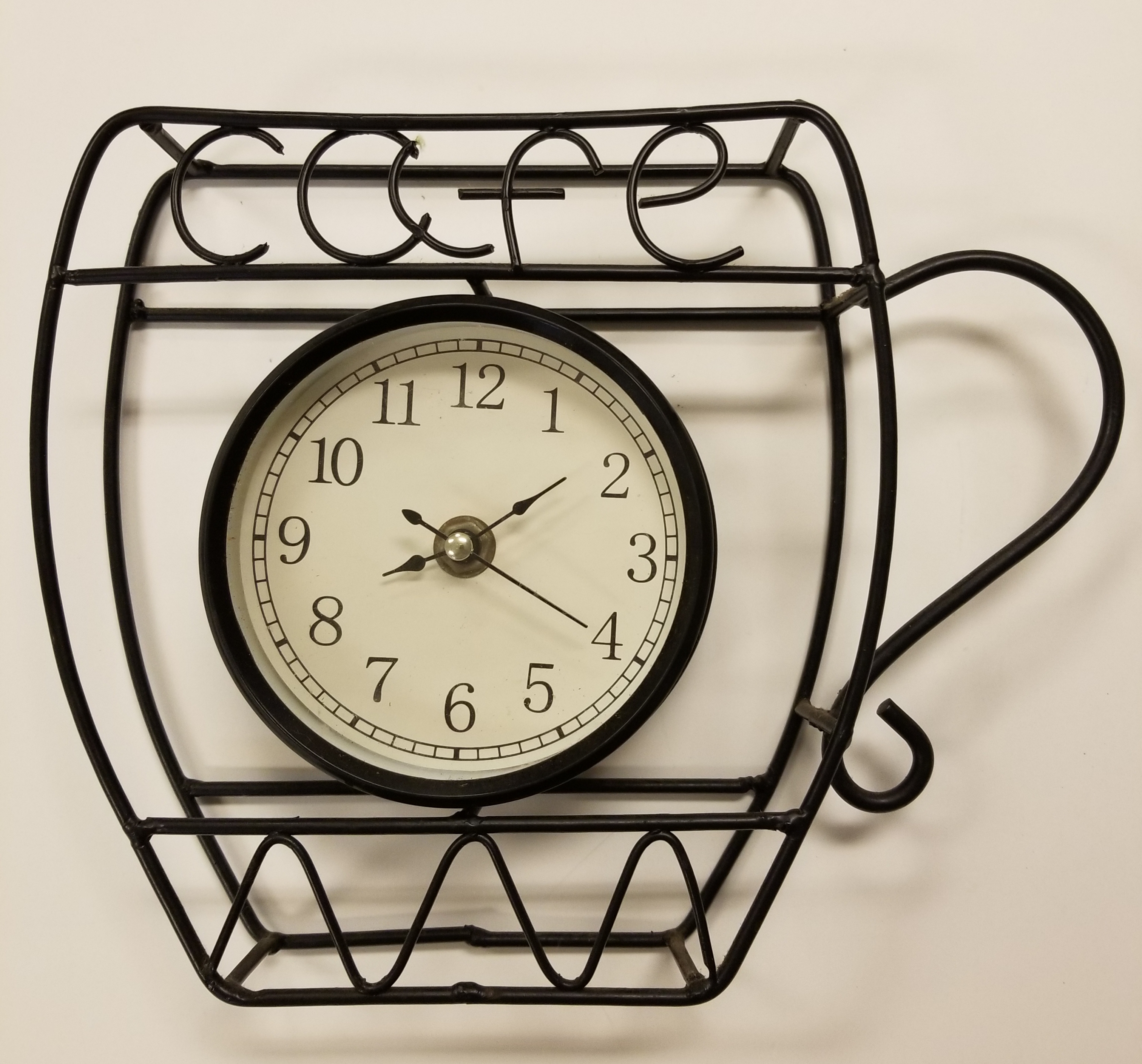
One notable exception is grinding. But this quick effort also sends your coffee on the road to extinction, in terms of quality. Once ground, you want to get it into your cup as soon as possible to maintain the integrity of its flavors.
Growing requires persistence as well, while the rest of the methods in pursuing the perfect cup of coffee are more involved.
Processing the plucked coffee cherries involves either the dry or wet method. Dry coffee processing is the ancient form, used in regions with little water, or by smaller farms. Once picked, the cherries are spread out on large, usually raised beds to dry in the sun for about 15-20 days. Turning them occurs regularly so they avoid fermentation and dry uniformly.
Wet processing expedites the drying, though that sounds counterintuitive. Water is used to clean the cherries and separate the beans. They’re then put through a machinated pulping method to extract the ripe beans (if not ripe, they don’t come free). Mucilage surrounding the bean is hopefully removed during this process, leaving just the flavorful center, which takes approximately 24 hours. Beans are then dried in the sun, or by another machine.
Next Steps
To ready the coffee beans for brewing, it takes an expert roaster. Here at Wood-Fire Roasted Coffee Co., Roaster/Owner Tim Curry first analyzes the beans, focusing on the flavor profiles and regional characteristics. Then, it’s experimentation time, trying different roasts to find the best possible expression of the beans.
Once Tim determines the idyllic level of roast, the beans then need time to “set up”, which takes anywhere from a few hours to days for them to reach their true flavor potential. 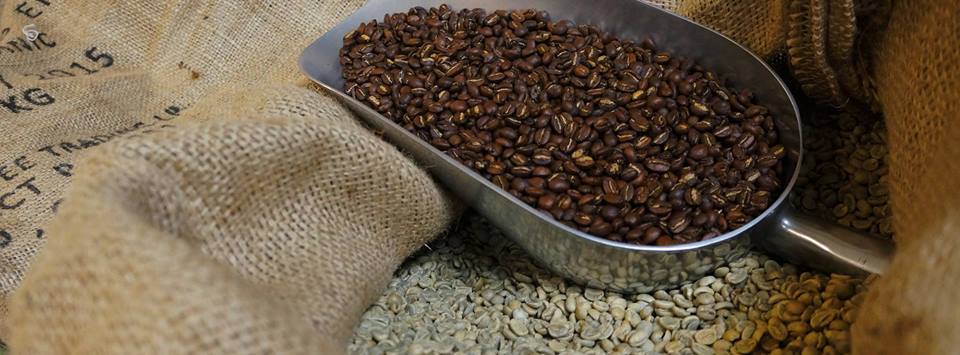 Why?
Why?
During the roasting process, CO2 develops within the coffee bean. This is a natural reaction that is a byproduct of pyrolysis or the Maillard effect.
As shared in Handground.com, “The Maillard Reaction is responsible for turning a few dozen compounds inside the coffee bean into hundreds, even thousands of aromatic compounds that make up the unique flavors of coffee. These compounds include the organic acids (citric, acetic, and malic acids to name a few) that give coffee its brightness. Other compounds like aldehydes, furans, and pyrazines give coffees their range of flavors like sweet, earthy, caramel, butterscotch.”
The CO2 presence can, in drip-brewed or French-pressed coffee, create a barrier around the coffee grounds, inhibiting the extraction process leaving some of the wonderful flavors languishing inside the spent grounds.
With espresso that same carbon dioxide becomes even more impactful. Not only can it interfere with the extraction process, but the addition of pressure to the heat and water will create carbonic acid. This will give your shot a sour character.
The solution? After purchasing a bag of whole beans from the roaster, let them rest a bit before brewing.
How Long Should Coffee-Lovers Let Freshly Roasted Beans Rest after Purchasing?
The first step, purchase beans, preferably with a “Roasted On” date.
Next, depending on what type you purchased and from where, allow them to rest before grinding, or, with some, you can jump right in.
Some coffees do like a little more rest than others, however. In some cases, eight to 12 hours is sufficient to start brewing. If you’re finding your coffee to be a bit harsh or astringent, let the beans rest longer.
 For espresso, enough of the carbon dioxide has dissipated post-roast to alleviate most of the carbonic acid impact after three or four days. Your best-use range for espresso is four to 14 days after roast, with another week after where the coffee will still be very good.
For espresso, enough of the carbon dioxide has dissipated post-roast to alleviate most of the carbonic acid impact after three or four days. Your best-use range for espresso is four to 14 days after roast, with another week after where the coffee will still be very good.
Whereas, for drip or French press-brewed coffee, you can jump right in as soon as it is roasted.
However, there are also flavors that will only be experienced in the first few hours after roast, so don’t be afraid of trying your coffee right out of the roaster either. Just know it will improve with a little time. Tim likes to experience the entire life of the bean. After 14 days, oxygen begins to create a staling effect and becomes more pronounced in the flavor. At 21 days, your beans will likely be too stale.
Helpful in relieving any residual CO2 content within beans, rested or otherwise, is letting them bloom 0in a French press, Chemex or brewing contraption, then let the beans bloom for about 30-45 seconds, a process you’ll see occurring by the small bubbles forming on top.
Generally, lighter roasts will need a bit more time to rest as the beans are harder and denser. They will have less CO2 that has developed, but the CO2 can’t escape as readily. This can be observed in the bloom; lighter roasted coffees have a gentler bloom than darker, less dense coffees.
Even after brewing, the coffee likes a minute to settle down. You can see this as the coffee changes as it cools. The optimum temperature for tasting coffee is around 140 degrees. However, the test, in this roaster’s opinion is how the balance in the cup maintains itself through the life of the cup. For instance, bitterness is more notable in hotter coffee because our tongues don’t perceive sweetness as readily at higher temperatures and any overly sour tones will become prevalent as the coffee cools below 115 degrees. The “Sweet Spot” for your cup is between about 140 and 115 degrees as this is where the coffee has the greatest balance of all aspects of its profile.
At the end of the process, relish in the multi-faceted flavors and aromatics emerging from your cup, and be aware that giving it a minute might just be the best way to have the optimal flavor experience.
Thank you Natasha Bourlin of Passport and Plume
How to Pair Coffee with Food
by Natasha Bourlin of Passport and Plume
Within each coffee bean is a treasure trove of tastes. Every coffee-growing region around the globe puts forth flavor profiles for which they become renowned, but it takes the skillful art of a roaster, combined with a dash of scientific expertise, to coax the ideal expressions of those beans out.
While coffee is a complete flavor experience in itself, the steaming, flavor-filled beverage pairs well with foods also. Much focus is put on pairing the perfect wines with a particular dish, but, like wines, flavor components in coffee can exquisitely complement certain menu items.
Not every dish pairs well with coffee, however. So, we’re here to give you some guidelines to get you going on your next gathering or first coffee pairing adventure.
Some Basics About Pairing
Consider your method of brewing when pairing. Pour-over systems with filters will absorb most of the oils from the brew, so if dishes will benefit from a bit of brightness in the coffee use the paper filter method. A metal filter will allow those same oils to pass through making the brew rounder and creamier; a French press, or espresso maker are excellent examples.
Next, research the flavor profiles found in various coffee regions. Don’t worry, we’ll help you with this below.
When similar flavors are found in both food and coffee, they can enhance each other, like dark chocolate paired with dark-roasted, chocolate-noted coffee. But also consider contrasting them, like a sweeter, more acidic coffee with creamy cheeses.
Roast also comes into play when pairing.
Light and medium roasts work well with lighter dishes, while a heartier, dark roast matches more with dishes with stronger flavor profiles. At Wood-Fire Roasted Coffee Co., we roast beans over an open wood flame, which can infuse slightly smoky notes that are incredible with savory, meats, roasted veggies and barbecue.
Breakfast and Coffee – A Perfect Match
Natural friendships exist in the coffee-pairing world. A cake was even created as an homage to the brewed beverage; its sweet, cinnamon-rich flavors serving as an idyllic accompaniment to the nutty, brown sugar notes in Nicaraguan, Costa Rican or Guatemalan varieties.
Coffees with more acidity, such as those from Kenya or Colombia, work well with butter-laden croissants. Adding some frothy milk to your cup will further complement the buttery flavor, though this may be considered a criminal offense to most coffee purists.
Having bacon and eggs? Acidic coffees will cut the grease pleasantly. Try some Colombian with America’s favorite morning meal. Beans from Papua New Guinea, Indonesia or Sumatra match superbly with the savory elements in omelets and quiches.
Fruity breakfasts befriend coffees beautifully. Pair items featuring fruit like tarts and crepes with Ethiopian, Costa Rican or Brazilian coffees. The stone fruit and peach notes of Tanzanian coffees are also ideal.
Savory Savvy
Wine and cheese? So last year. Try coffee and cheese instead!
Espresso pleasantly surprises the palate when served with slices of fresh parmiggiano. Earthy Indian Malabar is divine with goat cheese or truffle-infused fromage. Its slightly beefy notes also complement things like pork belly or red meats.
Side by side, coffee and savory dishes can be mouthwatering, but you can also try using ground beans as an ingredient. Next time you’re cooking a tri-tip, for instance, rub some cumin, cayenne, brown sugar and ground coffee as a rub prior to it hitting the heat.
Coffee and Dessert
One of the best ways to finish any meal is with the lingering taste of a fine coffee.
For dessert, a multitude of regions produce tantalizing coffees with touches of sweetness. If your coffee finishes with some sweeter notes—like caramel, chocolate or nuts—chances are it will work well with most desserts.
Jamaican and Kenyan coffees complement berries well. Other fruit-forward sweets pair deliciously with Ethiopian and Costa Rican coffees.
Chocolate may indeed be coffee’s best friend.
Imagine a European café where a shot of espresso is presented with a piece of dark chocolate. Picture sipping on a cup of Guatemalan brew with a piece of succulent chocolate cake.
Choose dark roasts with dark chocolate, and nearly any light-to-medium roast variety with milk chocolate. You may hear a symphony playing in your head as the flavors mingle on your taste buds.
Bring out your inner gourmand and integrate coffee into every meal. Next time you’re hosting a gathering, shock your friends and family with coffee pairings instead. Create an elevated brunch experience with different coffees from around the world paired with various items or offer folks at your dinner party an alternate to imbibing.
Your guests will thank you.
How to Make Every Day National Coffee Day
Here at Wood-Fire Roasted Coffee Company, we celebrate National Coffee Day every day.
We believe coffee is a beverage worthy of commemorating daily, not just once a year. For many of us, preparing and sipping coffee is a ritual. It allows our mornings to run smoother, perks our afternoons up, and provides the last flavor our mouths relish after our evening meal.
So that you too can make everyday Coffee Day, here are some tips to prepare the very best cup you can:
Beans
• First, begin with 100% whole Arabica beans. These beans brew the finest quality coffee.
• What’s your preferred flavor profile?
Do you like the fruity, botanical notes of light-medium roasts? More of the chocolatey, nutty notes found in darker roasts?
Choose your favorite profiles and then find your best coffee fit.
• Grind the beans just before you brew, preferably in a Burr grinder, which provides exceptional coarseness or fineness and consistency for preparing perfect, or as close as you can get, coffee.
Grind fairly coarsely if using a French Press or pour-over system like Chemex™. For espresso machines, use a fine grind. While we don’t recommend drip coffeemakers, if using one, use a medium grind.
• Remember, if you like “weak” or “strong” coffee, it’s not about the roast or beans, it’s about how you prepare them.
Water
• Whatever your brewing method, the water needs to be the correct temperature to extract the mouthwateringly flavorful volatiles, while avoiding any bitter notes.
Boiling point at sea level is 212° Fahrenheit. As the USDA states, “With each 500-feet increase in elevation, the boiling point of water is lowered by just under 1° F.”
Using that equation, boiling point at 5,000 feet is approximately 200° Fahrenheit.
• Boil the water until it reaches between 195° and 205° Fahrenheit. Temperatures below that may not draw out the most palatable compounds, anything higher may scorch the beans, adversely affecting the flavor.
Brew
• Once you’ve decided upon the beans, pick your brewing method and grind appropriately.
Consider the following:
o Devices requiring a paper filter such as pour-over systems will absorb many of the acidic, bitter-tasting lipids present in coffee. If you prefer a crisper mouthfeel from your cup, use this method.
o Conversely, French Presses use no paper filters, and therefore allow all solubles present in the beans to come through. This results in a creamier more viscous mouthfeel.
• Wood-Fire Roasted Coffee Company’s Owner/Roaster Tim Curry feels coffee perfection is achieved with a brewing ratio of 15:1, meaning adding one part coffee to 15 parts water. For example, adding six ounces of water to two tablespoons of ground coffee provides that 15:1 balance.
• If you prefer “strong” coffee, add a bit more grounds. Folks liking weaker coffee should add off boiled water to their cup after the coffee is brewed.
• Allow your beans to bloom before adding all of the water. Pouring a bit of the hot water over the grounds, then agitating them slightly and allowing them to bubble for about 30 or so seconds helps release any of the residual, post-roasting CO2 remaining within the coffee which prevent water from getting to the delectable solubles inside.
Once the bubbling action stops, you’re ready to add the rest of the water.
• Let the water steep into the grounds for approximately three to four minutes, then discard the paper filter or depress the plunger and enjoy your cup of delicious, self-prepared, caffeinated mastery!
Contributed by Natasha Bourlin of Passport and Plume
Cold Brew for Hot Summers
Natasha Bourlin Contributing Author
When temperatures hit the high double- or even triple-digits, a steaming hot cup of coffee may not sound so appealing. But that doesn’t mean you can’t indulge in your daily coffee ritual.
Just change it up a bit for the season.
Cold brew is the ideal solution for coffee lovers in need of their fix during the scorching summer months. You can pour coffee brewed in the general fashion, using hot water, over ice, but that is not cold brew — it’s simply iced coffee. So, let’s geek out a bit over these semantics.
What is Cold Brew?
Generally, when coffee is brewed, the solubles – aka oils, acids and aromatics – contained in each bean are extracted by water reaching 195-205 degrees Fahrenheit. Cold brewing is an entirely different process resulting in distinctive flavor profiles.

During this process, a coffee concentrate is slowly produced over the course of 15-22 hours. But, as the old saying goes, good things come to those who wait…
Heat is not used during any portion. Eliminating heat from the process also does away with the intoxicating aromas wafting from the cup, but the resulting flavors in cold brew will tantalize your tastebuds, ending any nose envy.
Using an increased amount of coarse coffee grounds plus cold or room temperature water, naturally occurring solubles and caffeine are slowly extracted, creating a sweeter, non-acidic nectar that you can dilute to taste.
As “Science and Food”, an online resource by the UCLA Division of Life Sciences and Department of Integrative Biology & Physiology, states in a blog entitled “Coffee Brewing Chemistry: Hot Brew vs. Cold Brew”, “Oxidation and degradation will still occur in cold brew methods, but this happens much more slowly; bitterness and acidity are just about absent in cold brew coffee, especially if it is kept cold. Though, cold brew doesn’t merely taste like hot brew without the bitterness.
“Fans of the cold brew method have emphasized that cold brews contain a completely different flavor profile that can’t be found with hot brews. Going back to the idea of solubility, not all flavor compounds of coffee solubles are equally soluble. A good majority of the coffee solubles are still able to leach out of the grounds, even in colder water. The compounds that don’t dissolve are the ones often attributed to unfavorable flavors [4]: these stay in the grounds that are subsequently tossed away. Consequently, cold brews take on a much sweeter, floral profile.”
The increased amount of coffee grounds used in cold brewing also means higher caffeine levels, but that’s also where dilution is helpful. And there are many methods to do this, which we’ll discuss shortly.
What a Difference a Day Makes
When it comes to cooling off coffee, shock equals chalk.
Meaning, if you simply pour hot coffee over ice, it shocks the liquid, making it too acidic and results in a chalky mouthfeel. Cold brewing extracts the coffee acids differently. Usually, acids come forward as coffee cools, but cold brewing mutes the acidity and remains constant because it’s already cool.
If you prefer iced coffee over the often interminable-feeling method of cold brewing, at least let it cool to room temperature before pouring over ice. This lessens the shock value for the coffee.
But remember, patience will be rewarded when taking the time to cold brew.
What to do to Cold Brew
To make your own cold brew, you can purchase one of the many systems available – check out this “Spruce Eats” article on the best they found this year – or you can do it yourself relatively easily. Results don’t differ much based on the method, so use what works best for you.
Most coffees work well as cold brew. A dark roast tends to produce deep, rich character. An Ethiopian turns out bright and lemony, and, as Owner/Roaster of Wood-Fire Roasted Coffee Tim Curry says, “Screams Saturday morning in July on the porch sipping your cold brew.”
To do it yourself:
1. Get a half-gallon mason jar or equivalent vessel.
2. Grind 10.67 ounces by weight (2/3 of a pound) of coffee coarsely ground.
3. Add 6 cups of room temperature water. Gently press any dry grounds with the back of a spoon to get them wet. Avoid stirring.
4. Steep for 15-22 hours.
5. Filtering is a two-part process, once the appropriate time passes:
a. Pour the concoction through some fine mesh into a container that will hold the liquid.
b. Then, pour it all through a CoffeeSock or muslin cloth to remove the fine sediment.
For a smaller amount, use this recipe:
1. Add 1/3 (5.3 oz) pound coarsely ground coffee to the 34 ounce French press.
2. Gently pour 3 cups of room-temperature water over the ground coffee
3. After steeping for 15-22 hours gently press the filter to the grounds and pour through a CoffeeSock or muslin cloth to filter out fine sediment.
Since the cool, delicious liquid is stronger using this technique, you need to reduce the concentration by diluting it.
While you can certainly use still water to do so, create some tasty and attention-grabbing concoctions using flavored La Croix sparkling waters, (coconut is a favorite) Pellegrino sparkling water, milk, even lemonade or ginger ale. The basic ratio of mixers to cold brew should be 1/1 to 2/1. Have some fun and find your favorite taste.
Here are some ideas to experiment with this summer…or anytime.
Remember, taste is very personal so feel free to modify proportions to your taste.
Cold Brew Buzz
• Make a honey syrup by reducing equal parts honey and still water in a warm pot.
• Add a dash of lemon zest.
• Mix two ounces of cold brew concentrate with one ounce honey syrup and 3-4 ounces still water or San Pellegrino.
• Add some milk or cream if you want
Coffee Palmer
Mix one-part cold brew with 1&1/2 parts San Pellegrino, then double the volume with lemonade over ice. (A wonderfully refreshing caffeinated pick-me-up.) A citrusy cold brew works best for this such as our Ethiopia, Yrgacheffe.

Gingery Cold Brew
• Mix two parts ginger ale with one part cold brew.
As the weather warms up, get acquainted with cold brewing, and call or pop into the roastery and ask Tim for advice on which coffees will go best for the recipes you want to try. For more details on cold brew, also check out our blog “Warming Up to Cold Brew”.
Climate Change and Coffee
How a Global Coffee Crisis May Be Averted
By Natasha Bourlin
Across the globe, the term “climate change” has become quite controversial. Few industries are as directly impacted by the possibilities and realities of climate change than farming, and Arabica coffee farmers are feeling the pressure, particularly in Ethiopia, the birthplace of the beloved bean.
Ethiopia’s dramatic biodiversity has spurned coffee growth for millennia. The origin of the word coffee is derived from the Kaffa region of the country. It’s said that intentional cultivation and consumption of coffee began in the 9th century with an Abyssinian goatherd named Kaldi. He saw his herd energized after ingesting the prevalent red berries grown on bushes in the area, so he tried a few himself and felt elated.
Taking the berries to a nearby monastery, the monks deemed them the work of the devil and proceeded to throw them into a fire. Soon, the monastery filled with an intoxicating aroma as the beans roasted. Other monks came to inspect the fragrance’s source. Beans were extracted from the fire and doused with water, creating a beverage that monks drank to keep them awake during their lengthy evening devotions. And the rest is history.
That original species of Arabica has traversed the Earth since its discovery centuries ago and modified by farmers and scientists a plethora of times since. Now considered an heirloom varietal, coffee producers on various continents often seek out the original Ethiopian strains to help remedy tainted crops. But what will happen if current climate changes adversely affect their remedy?
We could be looking at a global coffee crisis.
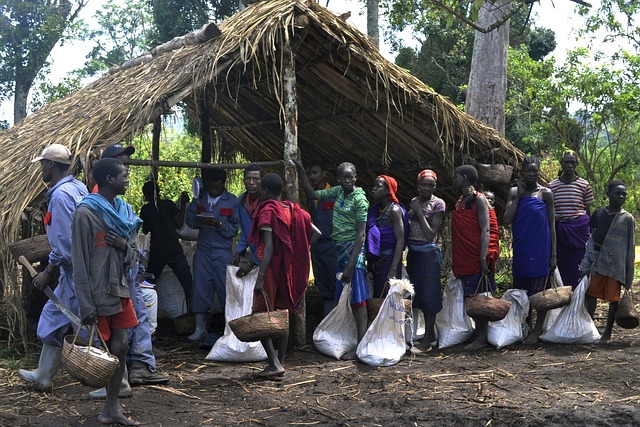
What is Climate Change?
Scientists have been studying the causes and effects of purported climate change for decades. A report found on Climate.nasa.gov states, “Most climate scientists agree the main cause of the current global warming trend is human expansion of the ‘greenhouse effect’ — warming that results when the atmosphere traps heat radiating from Earth toward space. Certain gases in the atmosphere block heat from escaping. Long-lived gases that remain semi-permanently in the atmosphere and do not respond physically or chemically to changes in temperature are described as ‘forcing’ climate change.”
Gases contributing to climate change, according to the same report, include
nitrous oxide, carbon dioxide, methane and water vapor. These are produced naturally, and in various terrestrial industries and agricultural endeavors.
According to National Geographic, “Greenhouse gases let the sun’s light shine onto the Earth’s surface, but they trap the heat that reflects back up into the atmosphere. In this way, they act like the glass walls of a greenhouse. This greenhouse effect keeps the Earth warm enough to sustain life. Scientists say that without the greenhouse effect, the average temperature of the Earth would drop from 14˚C (57˚F) to as low as –18˚C (–0.4˚F).
“Some greenhouse gases come from natural sources. Evaporation adds water vapor to the atmosphere. Animals and plants release carbon dioxide when they respire, or breathe. Methane is released naturally from some low-oxygen environments, such as swamps. Nitrous oxide is produced by certain processes in soil and water. Volcanoes—both on land and under the ocean—release greenhouse gases, so periods of high volcanic activity tend to be warmer.”
How is Coffee Production Affected?
Arabica-producing countries are largely found along the equator in subtropical regions and those with high rainfall. Climate directly impacts the flavors developed within coffee beans. In his book The World Atlas of Coffee, author James Hoffman shares that on the tree is where coffee’s flavor peaks, and that the goal of processing is to preserve that quality.
When climates shift, it directly impacts the long-instilled expectations farmers have of when to plant and harvest their crops and in what seasons they will thrive. The areas in which they plant as well as their yields are impacted, as are the flavors produced in the beans, when temperatures rise and droughts afflict regions.
Here we’ll use Ethiopia as an example, because it is the origin of all coffee beans. Climate change there has already been catching the eye of industry experts, as seen in this 2017 story entitled Climate Change Will Be Disastrous to Ethiopian Coffee Sector Without intervention, Research Shows on Dailycoffeenews.com.
A multitude of coffees are grown in three areas of Ethiopia: The Rift Valley, and the areas east and west of the valley. Forest (shade) coffee and sun coffee (little to no shade) are the two main production systems there, and crops are planted typically where water can be easily diverted to irrigate crops. Pesticides and fungicides are rarely used, making Ethiopian coffee typically exceed the organic certification standards we’re familiar with.
As seen in a U.S. National Library of Medicine report, “Indigenous Arabica plays a key role in coffee production in Ethiopia [4] and has an intrinsic value as the storehouse of wild coffee genetic resources, with an estimated value to the coffee industry of 0.5 to 1.5 billion US$ per year . . . The stated optimum mean annual temperature range for Arabica is 18–21°C [3], or up to 24°C [4]. At temperatures above 23°C, development and ripening of fruits are accelerated, often leading to the loss of beverage quality [5] . . .”
A worldwide danger to coffee crops, the Hypothenemus hampei, likely originating in central Africa, bores into coffee berries and seems to thrive in warm conditions. The pest has spread to the majority of coffee-producing regions the world over, with the exception of a couple of Asian areas. Reports say damage from this pest is responsible for over $500 million in losses annually. Fungal infections also result from increased temperatures and rainfall.
In-depth specifics on the entire Ethiopian climate change crisis as it relates to the coffee industry are also found in this 2017 Researchgate.net report. The country’s mean annual temperate has increased by 1.3 degrees Celsius, from 1960-2006. Hot days and nights have increased while cool days and nights have decreased. Overall rainfall has also been reduced by 10% between 1948-2006 across the country. These factors all impact coffee crops.
Coffee farmers interviewed during a field study between 2013-2016 claim weather patterns are now more variable, and uncertainty in yearly weather patterns has increased, as with the reliability of rainfall and onset of wet season.
Drought and heat have been attributed to increased plant death and stress. Environmental stresses can influence coffee growth through slight physiological distress, which is gauged by scientific devices, and obvious physical distress such as leaves wilting or death of the plant. During prolonged droughts, there is often a reduction in bean size and malformations. These changes, even small ones, can adversely affect coffee yield, quality and its price.

A Coffee Roaster’s Perspective
Owner and roaster of Wood-Fire Roasted Coffee Tim Curry has seen a difference in some his longtime favorite beans over the past decade. He’s been using Ethiopian beans, primarily Yirgacheffe from various producers, since embarking on his roasting career more than 17 years ago.
From crop year to crop year, he’s been seeing extremes, not consistency, as he relied on in the past.
“Quality overall has been slipping,” Curry shares. “I don’t know if it’s the microlots, handling or the seeds, but getting consistently great Ethiopian coffees has been more difficult over the past 10 years.”

He says there should be very little fluctuation from crop year to crop year with Ethiopian coffees, it’s one of the reasons he purchases beans from the region. Not limited to Ethiopia, Curry is quite familiar with African coffees, his Kenya Nyeri AB Gichatha-ini Signature Series having earned a rare 97 points from Coffee Review in 2011. He is acutely aware of even subtle differences in the beans he roasts for his customers.
Classic characteristics of Ethiopian coffees are lemon, honey and black tea with earthy notes. They’re generally sweeter and smoother, with no bitterness and touches of tannic black tea. Fluctuations in character are normal, Curry explains. Sometimes they’re brighter with lively citrus playing on the taste buds prominently. Sometimes flavor profiles are more earthy. But he’s seeing far more consistency extremes in his Ethiopian orders. For example, this year the lemon and black tea profiles were more muted.
He believes that the climate there is becoming more volatile, and that’s being reflected in the coffee.
What’s the Remedy?
Coffee farming provides the main source of income for approximately 15 million Ethiopians. Decrease in quality and health of this crop could prove economically devastating for the African country, not to mention global coffee growers reliant upon Ethiopian heirloom plants to help their own in times of crop crisis.
Unfortunately, coffee plants are notoriously sensitive to environmental changes. Finding solutions like shifting crops further uphill to cooler areas is critical. Hand harvesting, often seen in microlots, is optimal for coffee quality as those cultivating the beans pick only the ripe ones. Machines that do the picking on larger lots aren’t as discriminating.
Shifting crops to higher elevations to help them cope is one of the solutions for Ethiopian coffee producers. A recent study led by spatial analyst for the Royal Botanic Gardens Kew Justin Moat
used existing data, computer modeling and projections to forecast the fate of Ethiopian coffee farms. The study states that, “regardless of interventions, one of the country‘s best known coffee-growing regions — Harar, in eastern Ethiopia — is likely to disappear before the end of the century.”
The same report shares that professor of chemistry at the University of Nairobi’s Institute for Climate Change Adaptation, Kenya, Shem Wandiga says “that although the study cannot predict with full certainty, it holds important messages for policymakers.”
“Start planning to expand coffee growing areas to higher elevation,” he suggests. “The expansion should be coupled with forestation of the areas.”
No one wants the treasured and delicious caffeinated bean to suffer, as we all will as a result. Our part is to help decrease greenhouse gasses, therefore lessening the greenhouse effect that impacts climate change, while the fate of the primordial coffee region’s crops are in the hands of Ethiopian farmers.
Meanwhile, coffee roasters like Tim Curry will continue to craft exceptional coffees with the products they’re able to source.
Thank you Natasha Bourlin of Passport and Plume for the wonderful work on this post.
Photo credit: 1) ningxin23minor from Pixabay
2) Ammar Hreib from Pixabay
3) Mayra Santiago
A (Micro)Lot of Coffee
Wood-Fire Roasted Coffee (WFRC) is embarking on a new mission with far-reaching benefits, beyond making your taste buds do a happy dance, and letting you face the day in a far better mood.
Adding a rotating array of three-to-five microlot coffees to the WFRC repertoire will help customers explore some unparalleled, limited edition, small batch coffees while also helping smaller coffee farmers around the world support their families.
When speaking about microlot coffees, there must be a hefty appreciation of character. Characteristics of the coffees, the characters who cultivate it, and the characters that roast it.
Because growing small batches of exceptional coffees is often a passion project with some hopeful financial reward for the farmers, while bringing out the best characteristics of the beans they produce also brings out the artist in roasters like WFRC’s Tim Curry.
“I get to do fun stuff with coffee!” he gleefully shares when speaking about the microlot coffees he’s currently exploring. “But more importantly, my customers get to try some high-caliber new things. It’s a win-win.”
Any opportunity to flex between mad artist and scientist when roasting is where Tim Curry thrives most. It’s also a fine line to walk when experimenting with new flavors and varietals. The scientist researches what characteristics are known to be present in some microlots when choosing beans to purchase, and thinks on what roast temperature the beans will react best to. The artist begins to think of ways to apply his craft in new and interesting ways to make his customers’ eyes roll back into their heads, and their smiles spread wide as they lower their coffee cups from their lips.
What is a microlot coffee?
Imagine looking at a global map of coffee farms. Whereas macrolot, high-production farms would often be the equivalent of a thumbprint in size (imagine how many beans must be produced to keep those big name brands in biz…), microlot farms would be more of a pinhead, if even that large. Output from a macrolot can be tens, even hundreds of thousands of pounds annually while microlots may put out a total of 2,000 pounds in a good year.
“Farms producing hefty quantities of beans can still release some stunning coffees,” Curry says. “Take Brazil, they have some huge farms, and the specialty coffee is usually excellent. Similarly, there are some microlot coffees that can be extremely overrated.”
Roasters who find exceptional microlot beans grab them for their customers, and in turn recommend their customers do the same, as when they’re gone, they’re gone.
Sure, beans will probably grow back on the bush the following season, but, like fine wines, growers and roasters seek out the perfect storm of flavor perfection each year, because beans are always under the influence of many uncontrollable environmental factors like weather conditions. Some of these factors make them better, some worse. But the only consistency for most microlots is the inconsistency, and the fact that when they’re good, they’re some of the best beans found anywhere.
Take a peek at this story on PerfectDailyGrind.com for a more detailed explanation.
Coffees with far-reaching impact
Coffee-lovers’ palates aren’t the only thing positively impacted by these small-production farms; the community, and often cultural, impact can be significant. Coffee farmers and workers the world over are gaining skill sets and financial independence, many on microlots.
In Africa alone, women are becoming empowered and climbing the socio-economic ranks – even becoming landowners in areas where that was previously unheard of – through the cultivation of coffee, and the formation of organizations such as the International Women’s Coffee Alliance (IWCA). This story on NPR.org shares the powerful impact that coffee farming has made on four African women.
How does a roaster choose microlot beans?
After 17 years in the roasting business, WFRC’s Tim Curry invokes both his inner artist and scientist in selecting which microlots to purchase from, but always listens to one expert in particular: his gut.
“I look at regional characteristics and what particular farms have been producing,” he says. He also checks out cupping notes from some reliable sources he’s developed over the years. “Then, after I have made my purchasing decision, I pretty much ignore all that information so nothing influences my own findings once I begin to roast and taste the coffee.”
Since he roasts over a wood fire in the old world style, he has a method to his microlot madness. First, he tastes the results of roasting the green beans until very dark, almost to a Full City roast, when he hears that second crack of the beans after the sugars have fully developed and want out of their casings. Then, he roasts the beans very lightly to see how the flavor characteristics behave. After these two roasts, and nearly two decades of experimentation, he can instinctually identify where those particular beans should fall in the roasting rainbow.
Why try microlots?
These beans and blends from microlots are truly exclusive, highly limited and of exceptional caliber. Much like the specialty beans Tim seeks out and roasts for his Coffee of the Month Club members, the microlots he’s begun offering will only be around for a short time, and only available to those in the know.
Wood-Fire Roasted Coffee will regularly feature up to five microlot coffees that Curry finds to be extraordinary, with two terroirs frequently in the mix.
“I like to have something great from both Brazil and Colombia, when available, that my customers can always count on.”
We look forward to seeing how WFRC continues to elevate his customer’s tastes, and the quality of life of so many microlot farmers, if even on a micro scale.



